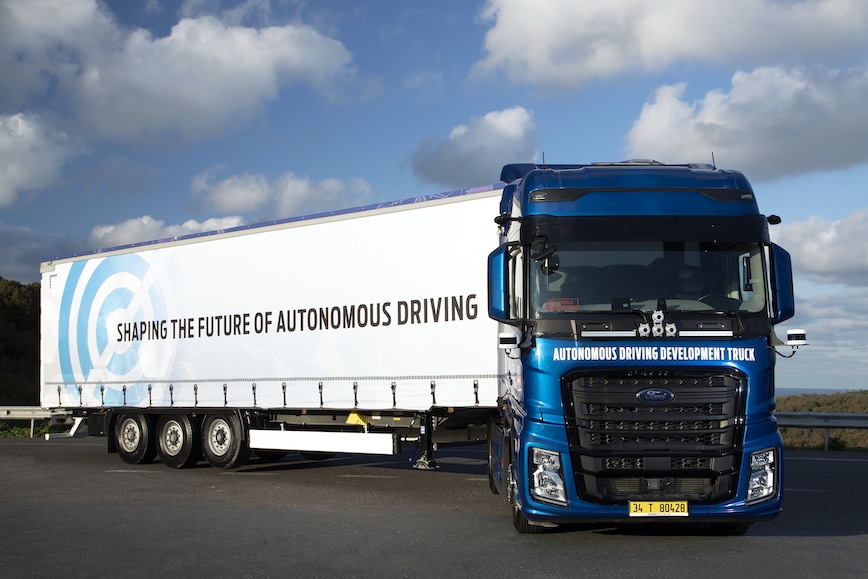Velodyne Lidar announced a collaboration with Ford Otosan, a large European truck manufacturer, on product development and testing of autonomous heavy commercial trucks. Ford Otosan is testing and planning to use Velodyne Velarray H800 LiDAR sensors to enable safe navigation and collision avoidance in next generation vehicles.

The two companies seek to improve roadway safety by helping trucks understand and react to approaching road conditions and surroundings. The Velarray H800 sensor can enhance automated safety and advanced driver assistance systems (ADAS). Its compact, embeddable form factor suit it for seamless integration in internal and external vehicle mounting locations.
The Velarray H800 offers extensive range, field of view and resolution to deliver rich point-cloud density required for high resolution mapping and object classification tasks. The sensor will help Ford Otosan to create autonomous driving technology, addressing edge-cases for driving situations, including curvy roads, potholes, intersections, on/off ramps, residential areas and roadways with unclear lane markings. The LiDAR sensor delivers high performance during daylight and at night, enabling the detection of vehicles, pedestrians, bicyclists, motorcyclists and more.
Ford Otosan is already using Velodyne’s Alpha Prime LiDAR sensors, which provide 360-degree surround-view perception technology to support autonomous mobility. The Alpha Prime is specifically made for autonomous driving in complex conditions for travel up to highway speeds. The combined range, resolution and field of view in one sensor is designed to enable autonomous vehicles and ADAS in a wide variety of lighting conditions.
“Autonomous vehicle technology, powered by LiDAR, can bring multiple efficiency and safety benefits to the trucking industry,” said Burak Gökçelik, Assistant General Manager, Ford Otosan. The company has undertaken an autonomous driving initiative with Velodyne.”
Ford Otosan acts as the global engineering center for Ford Motor Company’s heavy commercial vehicles, according to the press statement. It has an annual production capacity of 455,000 vehicles, 70,000 engines and 140,000 powertrains. It is equally co-owned by Ford Motor Company and Koç Holding of Turkey.

